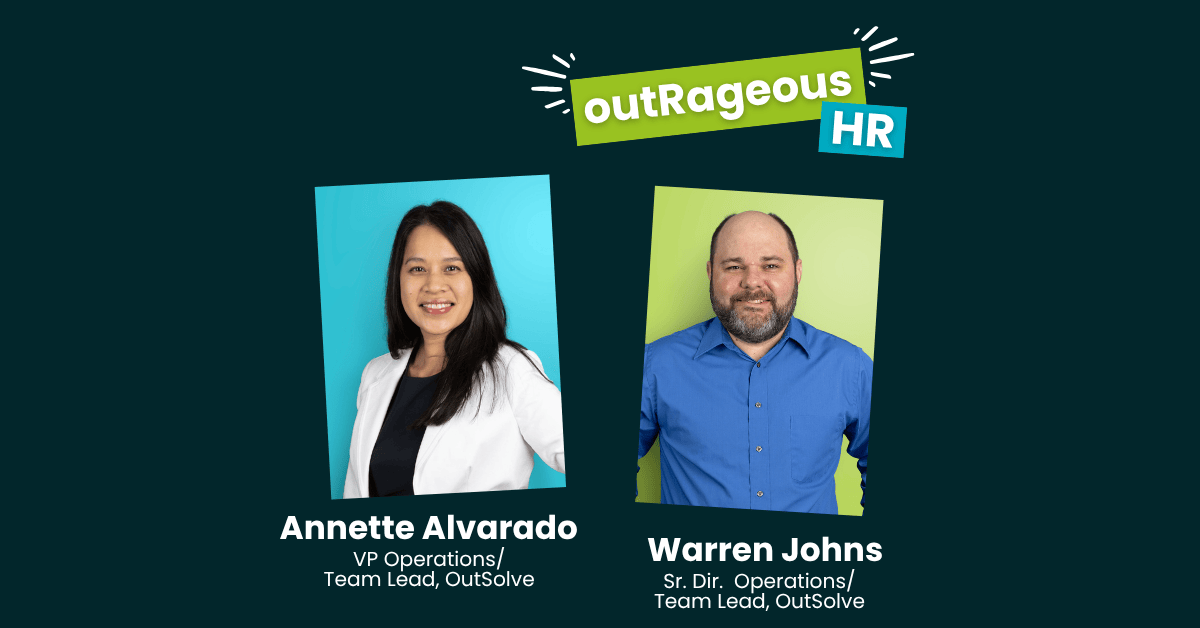
Are your hiring decisions truly fair, or could they be challenged? A clear merit-based hiring strategy helps provide a straightforward and structured way to evaluate the best candidates based on qualifications—not bias.
Although fair hiring and merit-based opportunities have always been legally mandated, fair hiring practices are receiving more mainstream attention than ever. Fifty percent of respondents to Norton Rose Fulbright's Annual Litigation Trends Survey anticipate discrimination claims will expose employers to labor and employment law disputes in 2025. In today’s politically charged environment, employees may feel increasingly empowered to challenge workplace policies, potentially leading to a rise in legal scrutiny for employers. As scrutiny around hiring discrimination, pay equity, and fair employment practices increases, HR leaders need to make sure their hiring processes are defensible and non-discriminatory.
Hiring based on skills and merit isn’t new, it has always been a core principle of affirmative action, Title VII, and equal employment opportunity laws. A recent executive order from the Trump Administration, titled Ending Illegal Discrimination and Restoring Merit-Based Opportunity reinforces this by emphasizing hiring should be based on merit alone and not race or sex. While the language has shifted, the fundamental goal remains the same: ensuring that the most qualified candidates are hired while maintaining fair access to opportunities.
The pressure is on employers to revisit and refine hiring practices. This article helps you explore how a merit-based hiring system promotes fair employment decisions, strengthens compliance with evolving regulations, and helps you reduce hiring discrimination risks.
What is Merit-Based Hiring
Let’s start by defining what merit-based hiring means. Determining the candidate that best fits your needs can be a challenging task. When you have set defined criteria for the job and what you need in a candidate, it can be easier.
Merit-based hiring is when you take a candidate's skills, experience, qualifications, and knowledge into consideration when making a hiring decision, instead of other factors like personal connections, sex, race, etc. This ensures that your company is hiring the most qualified candidate for the job, leading to a more effective and fair hiring process.
Merit-based hiring eliminates taking demographic preferences into account in policies or partaking in preferential treatment of employees based on race, sex, or similar protected characteristic.
Compliance Considerations for Employers
Employers must navigate federal regulations and requirements while maintaining fair and transparent hiring processes. Here are some things that will help you align merit-based employment with HR compliance in 2025.
EEOC Regulations on Fair Hiring and Promotions
Ensuring fair hiring practices requires balancing merit-based hiring with compliance under equal employment opportunity laws. The Equal Employment Opportunity Commission (EEOC) enforces regulations designed to prevent employment discrimination based on race, sex, sexual orientation, and other protected characteristics. Employers must ensure that hiring processes and promotion decisions rely on objective, job-related criteria while adhering to federal government regulations.
To reduce legal risks, maintain detailed hiring records and candidate dispositioning, document promotion justifications, and conduct regular pay equity audits. Train hiring managers on federal civil rights policies and anti-discrimination hiring laws. Aligning merit-based opportunities with EEOC guidelines helps ensure compliance while maintaining fair and transparent hiring practices.
Affirmative Action vs. Merit-Based Decisions
A common misconception is that affirmative action and merit-based hiring are opposing concepts. In reality, affirmative action policies were created to expand access to job opportunities while still prioritizing qualifications. These policies did not mandate hiring unqualified candidates but instead ensured that qualified individuals from historically underrepresented groups had fair consideration and access to job opportunities in the hiring process.
With recent policy changes, including the Ending Illegal Discrimination and Restoring Merit-Based Opportunity order, the emphasis has shifted further toward relying on merit as the best way to hire employees. However, employers must still comply with equal employment opportunity laws, ensuring that hiring discrimination does not create barriers. A well-structured merit-based hiring system can incorporate diversity, equity, and inclusion efforts while maintaining objective hiring criteria.
For example, a federal contractor may expand outreach to HBCUs or may target veterans' organizations and disability-focused job fairs to support diversity efforts. However, hiring decisions are ultimately based on validated assessments and structured interview questions aligned with job requirements. This approach broadens the candidate pool while ensuring final selections are grounded in qualifications, competencies, and performance.
How to Implement Merit-Based Policies While Ensuring Compliance
To successfully implement merit-based hiring while maintaining compliance, you need to create structured, objective evaluation criteria. The best way to hire employees is through skills-based assessments and standardized selection processes that eliminate bias.
For instance, instead of asking subjective interview questions like “What’s your biggest weakness?” or “Would you fit into our company culture?”, employers can use structured, job-related prompts like, “Tell me about a time you solved a technical problem under a tight deadline.” This approach reduces bias and ensures hiring decisions are based on demonstrated competencies and not gut feelings.
Regularly reviewing hiring data helps detect any unintended hiring discrimination patterns. Establish structured promotion and pay increase criteria to ensure that career advancement opportunities are based on performance and ability, rather than subjective preferences.
For example, a global employer may require that all promotion decisions be supported by documented performance reviews tied to predefined competencies. HR can then audit a random sample of these decisions each quarter to verify compliance with merit-based selection requirements.
By integrating merit-based employment with regulations, enforcement actions, consent orders, and requirements, you can foster a fair, legally compliant, and high-performing workforce.
3 Benefits of Merit-Based Opportunity
A merit-based hiring system awards job opportunities based on skills, experience, and performance rather than subjective factors. Let’s explore three key benefits of merit-based opportunity for employers and employees alike.
Strengthening Organizational Performance
A merit-based system can offer several advantages including ensuring that you evaluate current and future employees based on their skills, experience, and ability to contribute to your company. Focusing on merit enables you to build a stronger workforce that performs better and adapts more easily to business needs.
Ensuring Fairness and Reducing Bias
One of the biggest advantages of merit-based hiring is that it provides a clear, objective framework for decision-making. Setting transparent hiring processes and standardizing evaluation criteria can help you reduce the risk of hiring discrimination claims. A structured, merit-based hiring system allows you to demonstrate that employment decisions are made fairly and are based on the most qualified candidate, supporting compliance with equal employment opportunity laws.
Enhancing Employee Satisfaction and Retention
Employees want to know that their efforts and achievements matter. A merit-based employment system fosters a culture where hires, promotions, and career advancements are earned through performance and ability. When employees see a clear path for growth based on their contributions, they are more engaged and committed to your organization.
![[OTSLV]-BLOG-interior images-3 Benefits of Merit-Based Opportunity (1)](https://www.outsolve.com/hs-fs/hubfs/%5BOTSLV%5D-BLOG-interior%20images-3%20Benefits%20of%20Merit-Based%20Opportunity%20(1).png?width=600&height=314&name=%5BOTSLV%5D-BLOG-interior%20images-3%20Benefits%20of%20Merit-Based%20Opportunity%20(1).png) Take a Merit-Based Approach to Talent Acquisition and Hiring Practices
Take a Merit-Based Approach to Talent Acquisition and Hiring Practices
A well-structured talent acquisition strategy ensures you attract and retain the most qualified candidates while maintaining compliance with equal employment opportunity laws. Discover how merit-based hiring can help you make more informed talent decisions.
Distinguish Between Merit-Based Hiring vs. Skills-Based Hiring
Both merit-based hiring and skills-based hiring aim to place the most qualified candidates in the right roles, but they differ in focus. Merit-based hiring evaluates candidates based on a combination of experience, education, competencies, and past performance, ensuring a comprehensive assessment of their ability to succeed in a role. Skills-based hiring, on the other hand, focuses more on demonstrated abilities and competencies rather than traditional qualifications like degrees or job titles, which don’t always predict performance.
For example, an engineering firm implementing a merit-based hiring approach evaluates candidates using a combination of credential review and performance-based assessments. In addition to reviewing each candidate’s relevant certifications and work experience, hiring managers administer job-related and validated technical simulations to measure problem-solving and application of knowledge. This approach focuses on both hard and soft skills and allows hiring managers to assess a candidate’s full qualifications, beyond academic credentials alone. It also supports the company’s hiring plan by removing unnecessary barriers to entry while maintaining a strong focus on performance and job-related competencies.
When navigating equal employment opportunity laws and anti-discrimination hiring laws, the best approach often combines elements of both models to ensure you are hiring the most qualified candidate for the role.
Establish Assessment Criteria
To ensure fairness and consistency in merit-based hiring, you need to establish clear, measurable assessment criteria. The key is defining job-related competencies that reflect the requirements of the position while avoiding bias.
To set effective hiring criteria, start by identifying the core competencies each role requires, such as technical skills, leadership abilities, and industry knowledge. Define clear success metrics, like standardized test scores, structured interview responses, or measurable past performance. Use structured scoring systems for resumes, assessments, and interviews to minimize bias and maintain consistency.
When you rely on quantifiable data rather than subjective opinions, you create a merit-based hiring system that selects the most qualified candidates. This approach strengthens your hiring processes and helps ensure compliance with equal employment opportunity regulations.
Adopt Effective Candidate Evaluation Techniques
Selecting the right candidate in a merit-based hiring system requires objective, data-driven evaluation methods. The goal is to eliminate bias while ensuring candidates are assessed based on their qualifications and potential.
Employers can enhance their hiring processes by using:
- Pre-employment assessments—Standardized tests that measure job-related skills and cognitive abilities.
- Blind resume reviews—Removing identifying factors such as race, gender, or education history to reduce unconscious bias.
- Structured interview processes—Using a consistent set of job-related questions to compare candidates fairly.
By implementing these evaluation techniques, you can make sure that jobs based on merit are filled with the most qualified individuals, improving both hiring efficiency and workforce quality.
![[OTSLV]-BLOG-interior images-Revisit Talent Acquisition and Hiring Practices (1)](https://www.outsolve.com/hs-fs/hubfs/%5BOTSLV%5D-BLOG-interior%20images-Revisit%20Talent%20Acquisition%20and%20Hiring%20Practices%20(1).png?width=600&height=314&name=%5BOTSLV%5D-BLOG-interior%20images-Revisit%20Talent%20Acquisition%20and%20Hiring%20Practices%20(1).png) Performance Evaluation in a Merit-Based System
Performance Evaluation in a Merit-Based System
A merit-based system doesn’t stop at hiring, it extends to how you evaluate and develop employees. Fair and objective performance evaluations ensure that promotions, raises, and career growth are based on skills, achievements, and contributions rather than personal bias. Learn how to structure an effective performance evaluation process that supports merit-based employment.
Key Performance Metrics
In a merit-based employment model, performance evaluation should be grounded in objective, data-driven metrics. These metrics help employers make informed decisions about promotions, raises, and career advancement while ensuring that performance assessments remain fair and unbiased.
Effective performance metrics include:
- Productivity benchmarks—Measuring output against role-specific goals
- Quality of work—Tracking accuracy, consistency, and effectiveness in job performance
- Collaboration and leadership impact—Assessing contributions to team success and leadership growth
- Professional development progress—Evaluating upskilling efforts and ability to take on new responsibilities
By clearly defining and tracking these metrics, you can make sure that promotions and compensation adjustments in a merit-based hiring system are based on actual performance, not subjective factors.
![[OTSLV]-BLOG-interior images-Key Performance Metrics (1)](https://www.outsolve.com/hs-fs/hubfs/%5BOTSLV%5D-BLOG-interior%20images-Key%20Performance%20Metrics%20(1).png?width=600&height=314&name=%5BOTSLV%5D-BLOG-interior%20images-Key%20Performance%20Metrics%20(1).png) Building a Merit-Based Hiring System for the Future
Building a Merit-Based Hiring System for the Future
A well-structured merit-based hiring system ensures fairness, compliance, and improved workforce quality. By aligning hiring practices with objective assessments, skills-based evaluation methods, and transparent pay structures, you can create an environment where employees succeed based on their qualifications and contributions.
Beth has over two decades experience in HR compliance consulting and non-discrimination planning. She currently serves as Senior Director of Operations at OutSolve. Beth combines her experience as a hands-on federal contractor with her knowledge of regulatory requirements to provide support to her clients in designing and monitoring their non-discrimination programs, providing guidance on Form I-9 compliance, and conducting proactive Form I-9 audits. Beth also partners with Talent Acquisition Teams to help maximize the impact of strategic disposition reasons and advises how to monitor these results in combination with recruitment sources to get the best ROI. Prior to joining OutSolve, Beth was a Director of Affirmative Action for a Fortune 300 federal contractor where she managed a non-discrimination program for 100,000+ employees and successfully coordinated hundreds of audits. Beth is a graduate of the University of Louisville.
Weekly OutLook
Featured Posts

The Federal Government Shutdown Lingers: HR Professionals Take Action

HR Planning: 5 Planning Steps for Q4
Related Posts

Federal Contractor Compliance: What HR Teams Need to Budget For in 2026
2026 is quickly approaching, and HR professionals working in federal contractor organizations have more than just recruiting goals, engagement...

CHRO Survival Guide: Talent, Culture, and Leadership: How CHROs Can Thrive in Uncertain Times
In Part 2 of our CHRO Survival Guide series, we explored the costs of deregulation, the intensity of I-9 and E-Verify enforcement, and the impact of...

The Federal Government Has Reopened: What’s Next for Federal Contractors
As non-essential government offices reopen, human resources, EEO, and compliance professionals in government contractor workplaces may want to...
 Beth Montgomery
Beth Montgomery
